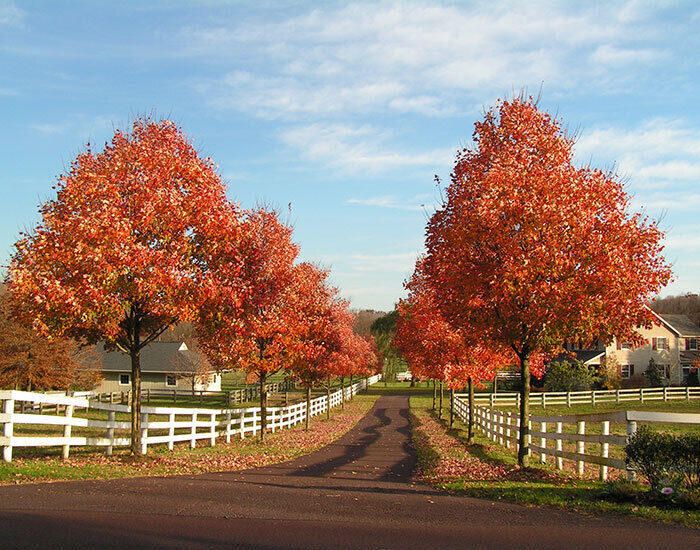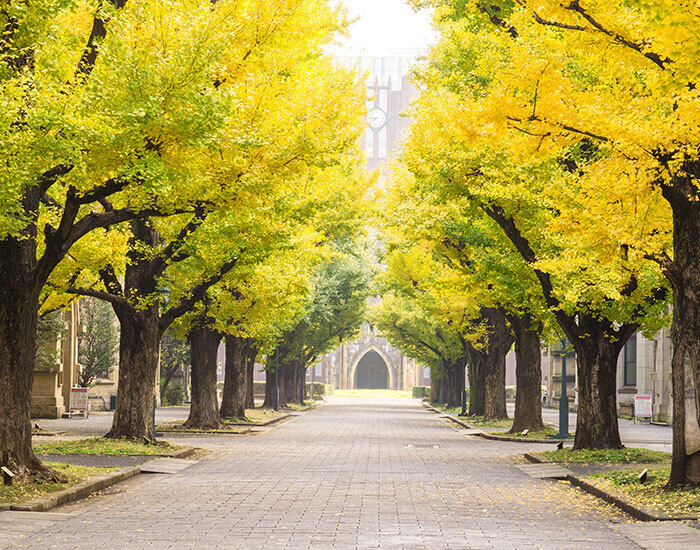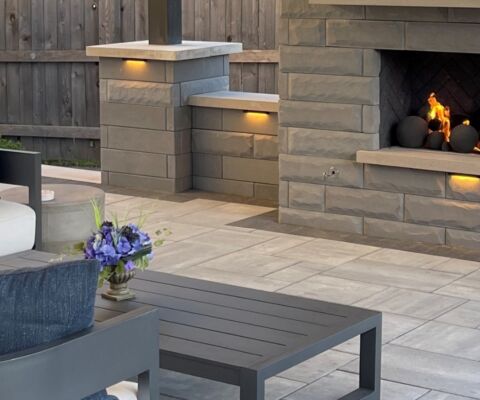September 21st, 2022
Autumn Colors

We’re always a little sad this time of year – days get shorter, temps often drop below 50 degrees, birds begin to migrate and winter creeps in a little bit at a time. But thankfully we live in the Midwest and nature will bring us one last beautiful show of fall foliage. Drives can turn into mesmerizing colorful displays and we all have our favorites. This month let’s explore some of these different kinds of trees native to our region.
Sugar Maple (Acer saccarum) is so popular four states and one entire nation has chosen it as an official symbol. This tree is easily recognizable with its green five-pointed lobed leaves that change to stunning oranges and reds in the fall. Maples are slow growing and provide a handsome anchor to any landscape. Just make sure to keep plenty of room between plants for those long-reaching roots and always give it plenty of water.
Dogwood (Cornus florida) puts on a show all year long. As the days get shorter, its delicate oval shaped leaves turn fire engine red and the bright berries appear as a welcome treat for many interested wildlife. Dogwoods only grow to about 20 feet tall, making them an excellent choice for any outdoor living space. Flowering dogwoods are particularly favored since they tend to sprout white flowers early each spring. Regardless of where you plant them, they will add beauty to your home and provide a dependable food source for hungry animals and birds.
Sassafras (Sassafras albidum) is known for its aromatic smell and vibrant foliage. Every September bright to medium 3”-7” green leaves give way to shades of reds, oranges, yellows, even some purple. Why choose your favorite when you can have a whole rainbow of color? The Sassafras tree bears ½ dark blue fruit in the fall and is a much loved food source for many birds. Plant under full sun or partial shade in acidic, moist well-drained soil and expect it to grow rapidly, one to two feet each year ranging from 30 to 60 feet tall.
Eastern Redbud (Cercis canadensis) is recognized as an ideal garden tree because of its small size and purple flowers that bloom every spring. Fall comes around and then those heart shaped leaves turn an intense canary yellow, some with bright streaks of red. The diminutive scope makes this selection ideal for a multitude of spaces and can be well placed in landscapes close to homes or other buildings.

Ginkgo (Ginkgo biloba) is one of the oldest tree species often referred to as a “living fossil” since it is known to date back before the dinosaurs roamed the earth. Considered an urban dwellers dream as it grows well with limited spacing, in full or partial light and is tolerant to heat and air pollution. Its unique, fan shaped leaves are easy to spot and the full spreading canopy of branches offers any needed shade. When the days get shorter and cooler the ginkgo transforms into a breathtaking golden goddess. The ancient homeopathic offering, Ginkgo Biloba is derived from the trees seeds and developed as an herb that is thought to be useful in treating many ailments. Ginkgos are hardy and tolerant of most any condition making it a low maintenance pick for planting in various settings.
Birch (Betula nigra) with its iconic bark is a preferred choice of landscapers for its year-round beauty and visual appeal within your outdoor area. Each fall the oval leaves evolve into a rich golden yellow offering a marked contrast to its pealing dark bark. They thrive in larger yards, as they tend to grow both up and out and can range as large at 50 feet when fully grown.
Make the most out of nature’s “paintings” by enjoying the changing leaves as much as you can! Fall also happens to also be the best time to plant new trees so when you decide on your best match, get that beauty in the ground! Sowing now gives new saplings an extra growing season before the stress of the hot summer days is upon us.
As always, we’re here to help if you have any questions. Contact us on our website or call us today!




